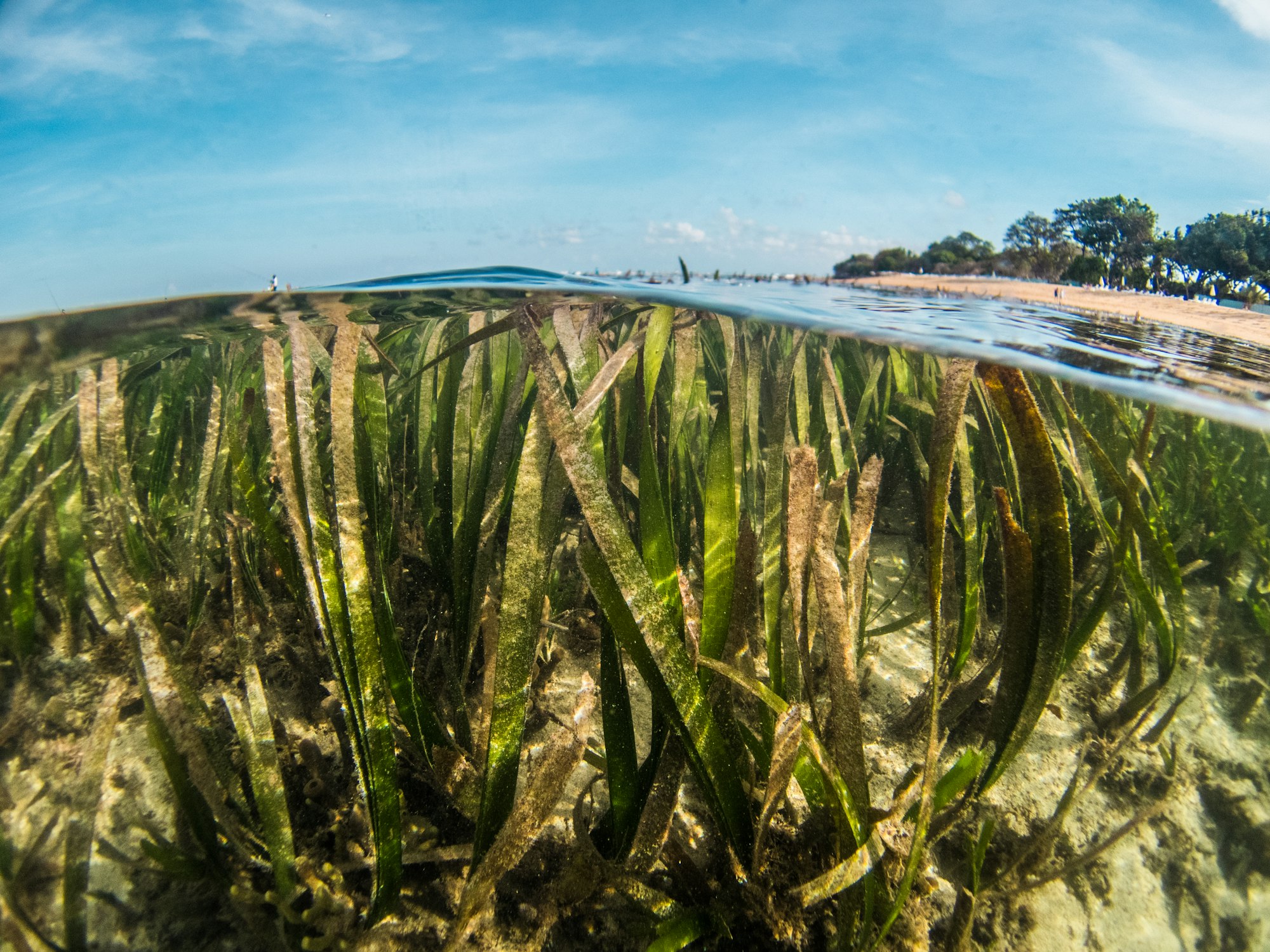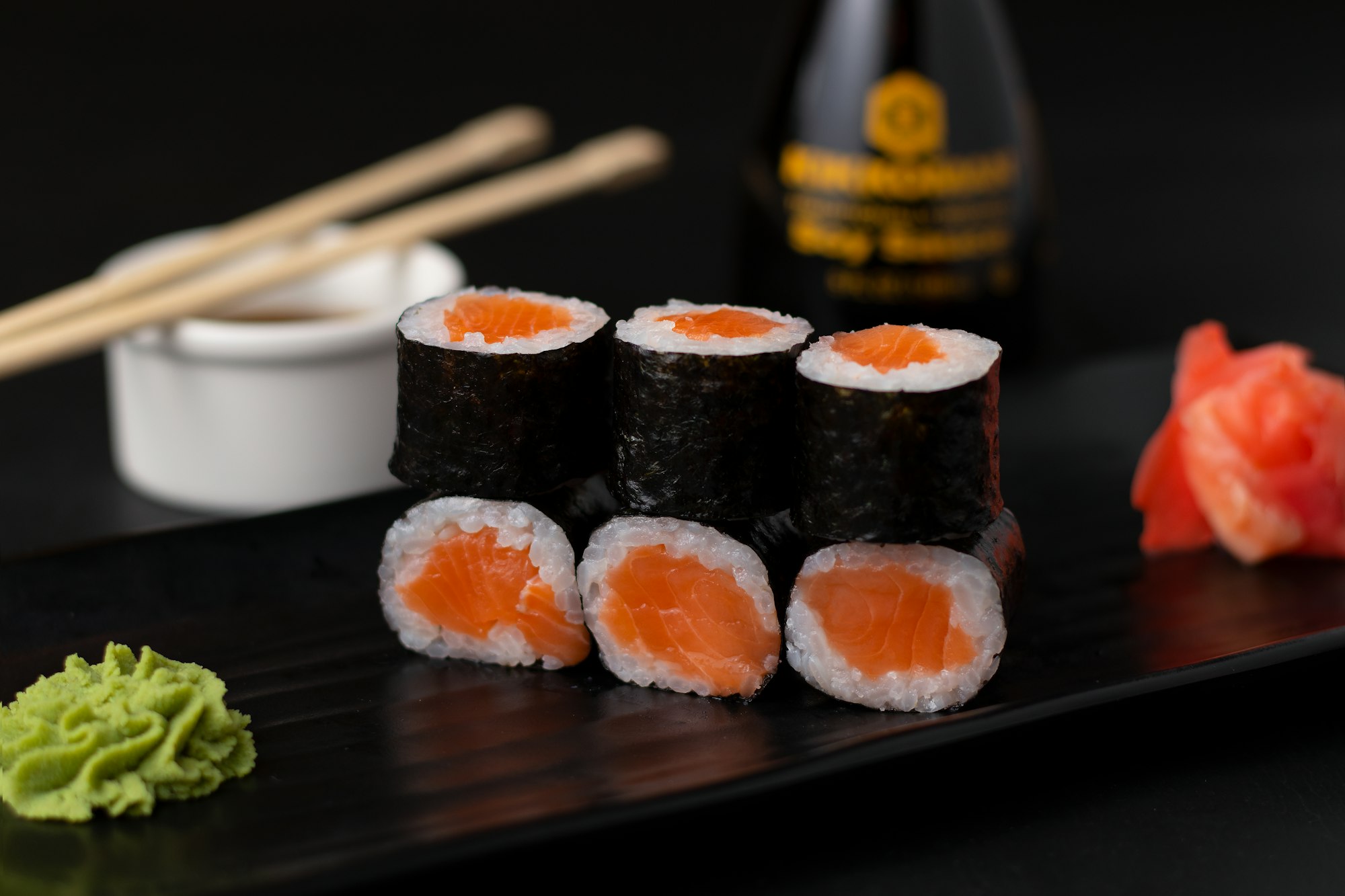The Colours Of Seaweed And Its Promise To Civilisation

Not many people eat seaweed regularly, I think. Supposedly, it is packed full of both macro- and micronutrients, including omega 3 fatty acids, minerals and a variety of vitamins, but there is the slight issue that it's...seaweed. Personally, I have no problem with it; I'll wrap my sushi up in it any and each day of the week, no problem. However, some people are not keen on the thought of eating it, and there have been instances where feeding babies home-made seaweed smoothies resulted in them getting brain damage and rickets. Such cases, however, are more a consequence of not understanding what one is doing and ignoring the advice of trained pediatric nutritionists than the seaweed itself being inherently bad - because it isn't. Just like eating thirty or so bananas in a row will hospitalise you, seaweed will also retaliate if you don't treat it with respect.
Other uses for seaweed include a natural way of trapping greenhouse gases from the atmosphere and energy generation (more on this later), as well as its widespread use as an organic fertiliser (which took me by surprise when I was researching this topic - I only just wrote an article on those, after all). One particularly prolific example is the Ascophyllum nodosum, a type of brown seawood native to the North Atlantic ocean that has been shown to contain biological compounds capable of promoting plant growth, stress tolerance and root-microbe interaction. Overall, the plant sounds like a pretty diverse material.
Except, of course, seaweed is not a plant. It's a type of algae - which are protists. Though I'm sure this is not much of a surprise to the biologists out there, it did take me a while before discovering it, so I'll assume a number of people are the same! So - what are protists?
Algae Being Plant-Like Protists
Taxonomically, all living organisms are grouped into three categories: bacteria, archaea, and eukaryotes. Multicellular organisms are all eukaryotes. These are then split into the kingdoms that we've all come to learn and love - the animals, plants, fungi and...the protists! Now, the most basic definition of a protist is 'any eukaryotic organism that is not an animal, plant or fungi' - but it is rather vague, and so I don't really like it. Fortunately, as described below, there are a couple more specific features in the group to characterise them with.
For starters, most protists are unicellular and reproduce asexually, which means that many species do not display much genetic variation within the group. This is not true for all protists, however, as we can see with the macroalgae (i.e. seaweed). Similarly, protists exhibit a diverse range of mechanisms for obtaining food. For instance, they may be autotrophs, which synthesise their own sustenance and/or passively absorb nutrients dissolved in the water around them; or they could be heterotrophs, which actively swim around with tail-like flagellae to hunt and consume other microbes in their vicinity by swallowing them whole. Alternatively, some protists are a mix of both - creating and hunting for food - and such species are referred to as mixotrophs. Freshwater zooplankton are a particularly good example of this.
Most protist autotrophs are plant-like and contain plastids - compartments inside the cells (known as organelles) that are used to produce carbohydrates using carbon-based molecules and light energy via photosynthesis. All plants also contain plastids, though theirs are typically known as chloroplasts for the chlorophyll pigments inside of them. Comparatively, protists are not restricted to chloroplasts for photosynthesis and can contain other plastids, such as the rhodoplasts in deep sea red algae or the phaeoplasts in brown algae (though these typically also include chloroplasts). Such plastids mostly only differ in the pigments that they use to absorb coloured light - adaptive traits that let different algae fit in with their environment. (e.g. While chloroplasts in green algae mainly absorb red and blue light for energy, rhodoplasts absorb the green light present in deep waters, hence allowing red algae to photosynthesise down to a depth of 268m.)

The fact that protists are able to photosynthesise is significant. Not only does it result in vast expanses of underwater biomes for other organisms to live in - such as the wondrous kelp forests that grow predominantly in the Pacific Coast - but it also serves as a powerful tool to combat climate change. Approximately 50 percent of all photosynthesis on Earth occurs in algae; they take up little space (particularly microalgae) and their plastid density is unparred, essentially making them some of the most efficient carbon dioxide absorbers in the world. Furthermore, many macroalgae have developed niche ways to accumulate sunlight and carbon dioxide more efficiently, and so are thought to be some of the most important carbon sinks in the natural world.
The Benefits Of Floating Kelp
According to a paper published in 2016 by Natural Geosciences, brown macroalgae such as members of the Sargassum genus have been observed to be particularly potent carbon sinks. Though such macroalgae normally grow on shallower coastal regions, studies have reported the presence of fresh Sargassum in the guts of deep sea crustaceans 6,475 m below surface level - leading to scientists theorising on how they got there in the first place. One prominent theory states that, after a certain period of localised living and growing on rocky coasts, brown algae can break off from their perch and wonder away into the sea. Using multiple gas-filled bladders located around their stem, the algae can then float on the water surface instead of sinking down to the sea floor, exposing them to as much sunlight and atmospheric gas as possible.

After a time of drifting and meandering around open waters, the algae's air bladders burst, making them sink down into the deep sea. Since waters are usually quite still here, the algae's components do not get transported further and so remain on the seafloor - thereby sequestering any accumulated carbon for millions of years to come. This process is known as carbon sequestration, and it is an exceptional argument as to why protecting kelp forests and other marine ecosystems should be taken seriously. Of course, in order to really tackle climate change, we still need to reduce fossil fuel emissions and industry-made pollutants (as warned by the 2021 IPCC report); but carbon sequestration should come hand-to-hand with that goal, anyway.
Other proponents for kelp and macroalgae argue that it could be used as a source of biomass fuel to produce electrical energy. This is because of how quickly and extensively macroalgae can grow, with some species being able to extend up to 60 metres underwater (like the giant kelp Macrocytis pyrifera). Additionally, since kelp grow virtically in the sea, they take up little space and do not require any of the arable soil that we use for land crops. Not to mention their abundance in nutritional values. All in all, kelp are pretty cool (and probably very profitable, too!).
To test how well macroalgae could be grown and farmed, studies have been made to model their cultivation by using lab-friendly Ectocarpus algae as a substitute. These are small filamentous brown algae that can be easily cultured in laboratories and are well fitted for genetic analyses and modifications - perfect for experimenting. Research on the matter is taking place right now, and the hope is that soon macroalgae will be more commercially available. There is a danger in this, though. For all their benefits and potential as food and green energy sources, algae have the possibility of running out of control, disrupting entire ecosystems if we are not careful.
An Algal Dilemma
For a while now, the topic of cultivating and spreading algae has been fairly controversial, to say the least. Some ecological activist groups like Friends of the Earth, for example, have strongly opposed the commercialisation of genetically modified algae in the past, claiming that such GM species could outcompete wild types in the environment and ravage their ecosystems should they be spread on accident. This argument is reasonable; there are multiple precedents where foreign or modified species have run rampant in non-native environments (like with the cane toad takeover in Australia), and algae could be particularly problematic, given their incredibly prolific nature in the wild.
Albeit, this can only really pose a threat if we modify algae to make them fitter and more competitive than wild algae - like, say, by increasing their capability for photosynthesising. If we instead altered them to have them synthesise higher amounts of omega-3 fatty acids, the property would most likely not be of much practical use to them, and so they would not be able to colonise new terrains very easily (unless there were no algae there in the first place). Either way, of course, their management and cultivation should be treated responsibly, as most botanists and geneticists will be aware of - which is why so much research is being made on the topic.
As varied as they can be - what with their being protists - both micro- and macroalgae nonetheless show wonderful promise for aiding us to save our civilisation, and so it is a very good idea to study them more thoroughly. They also make for quite a treat, I think!

References
- Mantin, E. G. (2019). Ascophyllum nodosum-Based Biostimulants: Sustainable Applications in Agriculture for the Stimulation of Plant Growth, Stress Tolerance, and Disease Management. Frontiers in Plant Science. Retrieved from https://www.frontiersin.org/articles/10.3389/fpls.2019.00655/full
- Vidyasagar, A. (2016). What Are Protists? LiveScience. Retrieved from https://www.livescience.com/54242-protists.html
- Wise, R. R. (2006). The Structure and Function of Plastids. Springer Netherlands, pp. 3-26. Retrieved from https://www.researchgate.net/publication/226671748_The_Diversity_of_Plastid_Form_and_Function
- Ynalvez, R. A. et al (2018). Algal Photosynthesis. Encyclopedia of Life Sciences. Retrieved from https://www.researchgate.net/publication/329002640_Algal_Photosynthesis
- Peters, A. F. et al (2011). Brown algae. Cell Press. Retrieved from https://www.cell.com/current-biology/fulltext/S0960-9822(11)00533-1?_returnURL=https%3A%2F%2Flinkinghub.elsevier.com%2Fretrieve%2Fpii%2FS0960982211005331%3Fshowall%3Dtrue#relatedArticles
